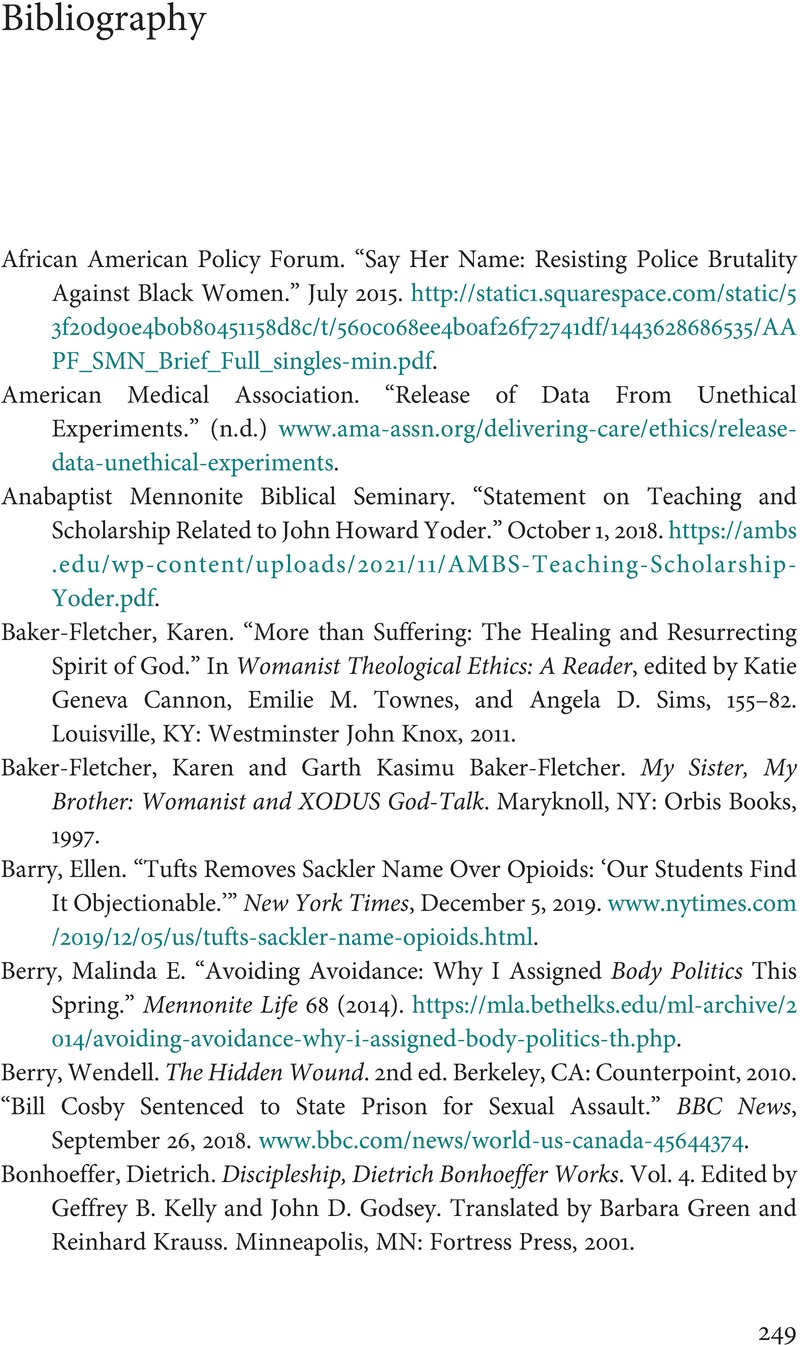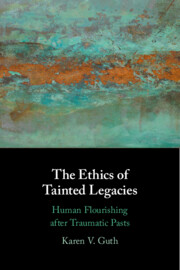Book contents
- The Ethics of Tainted Legacies
- The Ethics of Tainted Legacies
- Copyright page
- Contents
- Acknowledgments
- Introduction
- 1 Tainted Legacies
- 2 Common Responses to Tainted Legacies
- 3 “Biblical Birthright” and the #MeToo Movement
- 4 Heritage and Hate
- 5 Inheriting America’s Original Sin
- 6 Individual and Institutional Responses to John Howard Yoder’s Tainted Legacy
- Conclusion
- Bibliography
- Index
- References
Bibliography
Published online by Cambridge University Press: 07 July 2022
- The Ethics of Tainted Legacies
- The Ethics of Tainted Legacies
- Copyright page
- Contents
- Acknowledgments
- Introduction
- 1 Tainted Legacies
- 2 Common Responses to Tainted Legacies
- 3 “Biblical Birthright” and the #MeToo Movement
- 4 Heritage and Hate
- 5 Inheriting America’s Original Sin
- 6 Individual and Institutional Responses to John Howard Yoder’s Tainted Legacy
- Conclusion
- Bibliography
- Index
- References
Summary

- Type
- Chapter
- Information
- The Ethics of Tainted LegaciesHuman Flourishing after Traumatic Pasts, pp. 249 - 263Publisher: Cambridge University PressPrint publication year: 2022



